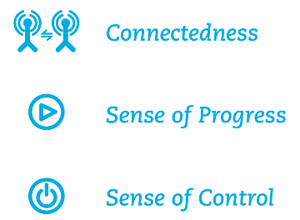
Happiness as a business concept might be difficult to pinpoint in terms of return on investment [ROI]. For some, the idea is too abstract to convince decision-makers to invest in workplace happiness. But what about the consequences of having an unhappy workforce and a culture?
To see if your organization is already experiencing the consequences and is in need of a course correction, watch out for these five signs:
According to Gallup’s 2017 State of the American Workplace report, 51% of currently employed adults say they are searching for new jobs or watching for new job opportunities. That’s half of your team – including your “star players.” When we look closer at millennials, 60% say they are currently looking for a new job.
Chances are, your employees are becoming increasingly aware of their options and regularly look out for new opportunities. With an unemployment rate at its lowest in more than a decade, the job market is becoming increasingly competitive, and it’s becoming more challenging to retain critical employees (and culture is a top reason people switch companies).
A turnover rate of around 10% is considered healthy and normal. If your employee turnover is higher, then look at why people are leaving [conduct exit interviews]. You’ll find that some of these concerns can be addressed through company culture.
.jpeg?width=300&name=pexels-photo-313690%20(1).jpeg) It’s easy to confuse signs of burnout with signs of employee discontent because they are so closely linked. As a manager or boss, it is common to assume your employees/teams are performing poorly by their choice or as part of retaliation. That however, is not likely the case. What if you dig deeper?
It’s easy to confuse signs of burnout with signs of employee discontent because they are so closely linked. As a manager or boss, it is common to assume your employees/teams are performing poorly by their choice or as part of retaliation. That however, is not likely the case. What if you dig deeper?
Some signs to watch out for:
A further note about health and burnout:
Jeffrey Pfeffer’s new book, “Dying for a Paycheck,” found that there are 120,000 excess deaths per year attributed to the workplace, and they cause approximately $190 billion in incremental health care costs. If you could reduce or avoid burnout, how might those cost savings affect your organization?
Are your projections off when you compare them to your organization’s actual performance? Of those factors, did you consider the happiness and motivation of your employees and what happens to performance when they dip?

We expect our employees to do their work only because we hired them to do so. That mentality treats them as if they were A.I instead of people with feelings, intrinsic motivators, and life challenges.
Humans can do extraordinary things when they have a sense of progress, connectedness, and control in their roles.
They need a culture that supports those elements in their everyday work structure.
4) You’re About to Scale
Whether you’re a part of an organization with five employees or fifty, expansion can be daunting. Your tight-knit company culture has to imprint itself onto each new hire, department, and team. If not, your organizational alignment might get thrown off, and your new hires may end up being costly in the long run.
Read how Alamo Drafthouse scaled their culture through business expansion, download the case study here.
For companies that want to maintain a reputation for WOW customer experiences, scaling their culture is necessary. If not, how can your new employees feel motivated and invested enough to create memorable customer moments?
Want to learn more about the benefits and ROI of employee happiness?

Bri is the Impact Storyteller on the Delivering Happiness team. Working previously as a freelancer, her goal has always been to work with passionate people who are focused on helping individuals and businesses find their purpose. As part of DH, she now gets to accomplish that every day. Bri resides in Arizona and is lucky enough to enjoy the sun all year round.